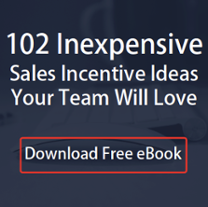 To drive sales performance, sales managers must carefully craft a team of sales people who can rise to meet the goals for the business.
To drive sales performance, sales managers must carefully craft a team of sales people who can rise to meet the goals for the business.
Sales incentive programs play a pivotal role in the achievement of these goals.
The challenge is how to choreograph sales incentive programs that will produce the right types of behavior. Sales people react differently to various forms of incentives and are motivated in various ways.
To pull off an award winning performance, sales managers should produce sales incentive programs that work in harmony with both long term and short term needs of the business.

To add to the challenge, executives often get tempted to incorporate various behaviors into a single sales incentive program. This results in a complicated program that nobody understands and as a result, doesn’t end up motivating much of anything, except frustration and confusion.
To strike the right balance with sales incentive programs, consider assembling your plan into three components.
The 3 Layers of Sales Incentive Programs
1. Base Compensation Plan
Much like the drum rhythm in an orchestral performance, the base compensation plan is the steady foundation that sales people rely on and understand clearly. Base salary, commission and bonus will work as the percussion instruments, beating the drum of achievement for the sales team. The ratio of salary, commission and bonus will vary depending on the business, but should lay the groundwork needed for the sales team to excel.
Utilizing best in class compensation tools such as Xactly, Varicent, or Callidus are instrumental in not only managing the base compensation plan but to aid in making the plan easy to understand and access whenever a sales person wishes to check on their status. These tools can synchronize with Salesforce.com (or other CRM systems) to keep performance aligned with business goals.
2. Monthly or Quarterly Sales Campaigns
As the string instruments build emotion and inspiration in a concert, spiff programs and sales contests build momentum and energy. The programs and contests can vary from month-to-month, or provide a consistent energy throughout the year. Examples include awarding sales people who exceed 50% of quota at mid-month with a gift card, or reward a sales team with a team outing or party when the team hits its goal. The tangible reward coupled with the recognition appeals to many sales people and can keep the momentum going for everyone. Rather than making this part of the base compensation program, this is a “campaign” that you add on to keep things interesting for the team.
3. Short Burst Sales Contests
Throughout the year, there are always short term needs for the business and sales managers are looking for a way to spike some specific activities. Whether there are leads from a trade show to pursue or a specific product launch, the short burst approach is like horns and wind instruments to ignite excitement and focus the sales team for fast-paced wins. These contests can run for one day, a week, or one month – but they should focus on a very specific task. Sales managers can utilize these contests for creative and quick successes. They can also be focused on a select group of people who need an extra nudge, e.g., to fill their pipeline with new sales opportunities, or to use Salesforce.com correctly.
With a three part approach to sales incentive programs, sales teams can be synchronized and pull off consistently successful performances to meet business goals. Sales managers can then keep a solid base plan and exercise creativity with spiffs and bursts whenever needed.




Looking for a creative incentive program for the sales team that will inspire, continue and achieve goals without breaking the bank.
I like the book on compensation
Am planning to launch a sales incentive program and your ebook will be of big help